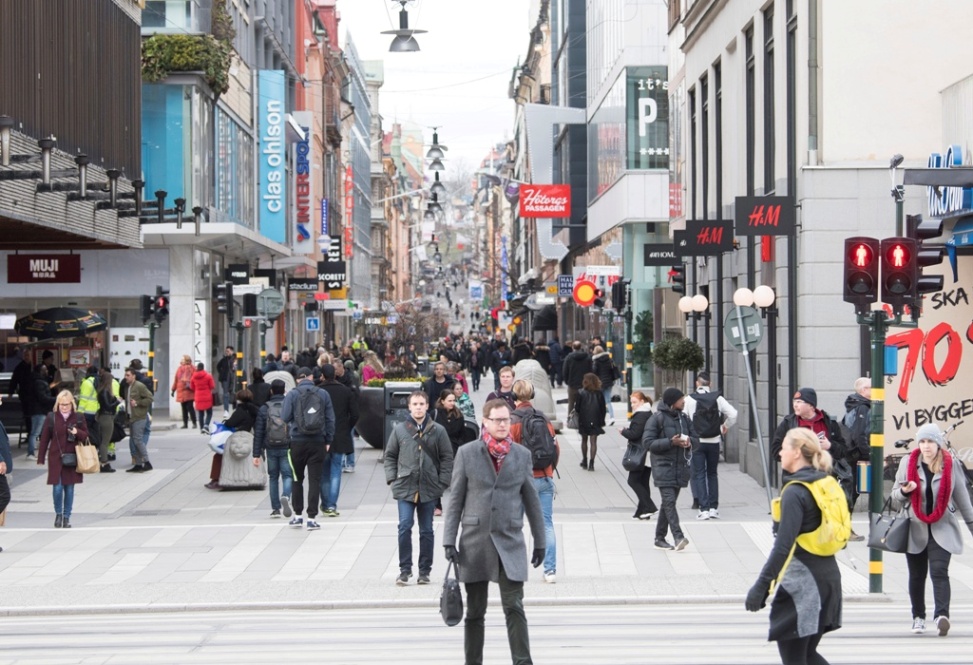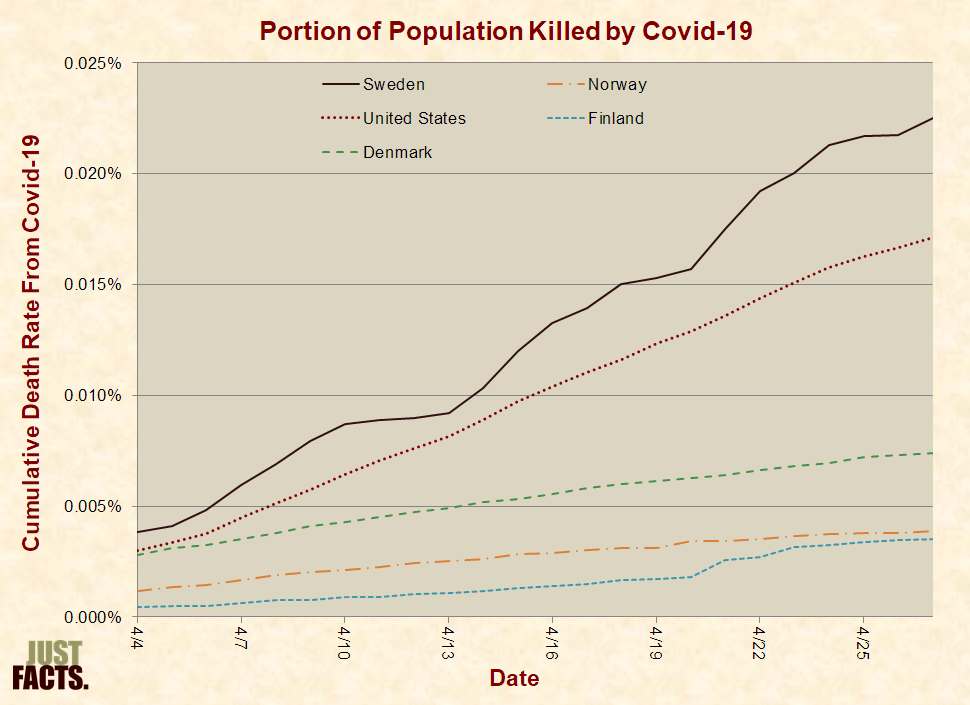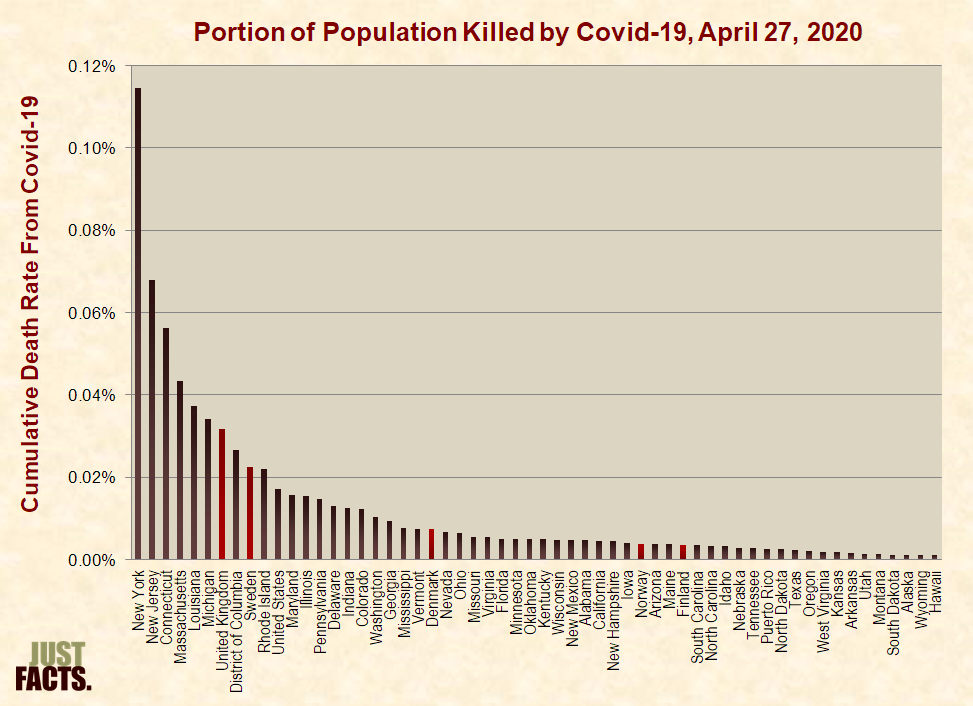Lives Saved By Lockdowns
In the science of epidemiology, or the study of human disease,
ethical and practical constraints often make it impossible to conduct experiments that can definitively establish the effects of medical interventions. This applies to determining how many lives might be saved by government lockdowns during the Covid-19 pandemic.
One can easily compare Covid-19 death rates—or the number of people who die from the disease divided by the total population where they live—in nations and states that took different actions. However, many other factors can affect these death rates, such as wealth, age, population density, government, hospital protocols, culture, genetics, diet, and exercise. For example, New York State enacted one of the
strictest lockdowns in the U.S. but has
22 times the death rate of Florida, which had one of the mildest lockdowns.
Given such considerations, the highest possible figure for lives saved by lockdowns can be estimated by comparing the nations of Scandinavia. This is because these countries are
culturally,
economically, and
genetically similar to one another but have enacted very dissimilar policies to deal with Covid-19. In the words of
Paul W. Franks, professor of genetic epidemiology at Lund University in Sweden:
The Swedish approach to Covid-19 could not be more different from its neighbors, placing much of the responsibility for delaying the spread of the virus and protecting the vulnerable in the hands of the public. It’s now April and, albeit with some restrictions, Swedish bars, restaurants and schools remain open. …
This all contrasts the far more assertive physical restrictions imposed in the culturally similar neighboring countries. Across the borders in Denmark, Norway and Finland, schools closed weeks ago and movement has been severely restricted.
Sweden has taken
certain measures to slow the spread of Covid-19, like limiting public gatherings to 50 people. However, these can hardly be characterized as “lockdowns,” and Swedish stores, restaurants, schools, beaches, and other public places are
open and bustling.
Stockholm, Sweden, April 1, 2020 (TT News Agency/Fredrik Sandberg via Reuters)
Comparing the current death rates of Scandinavian nations yields a maximum figure for the lives saved by lockdowns because Sweden’s plan involves more deaths in the early stages of the pandemic but less later on. As
detailed by Professor Franks, simulations show that the overall death rate is “expected to be similar across countries,” but “unlike its peers, Sweden is likely to take the hit sooner and over a shorter period, with the majority of deaths occurring within weeks, rather than months.”
As of April 27th, the
death rate in Sweden is 32% higher than in the United States, 3.1 times that of Denmark, 5.8 times that of Norway, and 6.4 times that of Finland:
Applying the Sweden/Finland death rate ratio of 6.4 to the United States, the maximum number of Americans who could have been saved by past and current lockdowns is
616,590. This figure is based on the most pessimistic projection of
114,228 deaths in the U.S. through August 4th by the
Institute for Health Metrics and Evaluation at the University of Washington. It is calculated by multiplying 114,228 deaths by 6.4 and then subtracting the 114,228 deaths that occur regardless of the lockdown.
The figure of 616,590 lives saved by lockdowns in the U.S. is at the extreme high-end of plausibility because it:
- uses the worst-case projection for the U.S. death toll.
- compares the death rate in Sweden to Finland, even though Denmark—which has also implemented a strict lockdown—has twice the death rate of Finland.
- assumes that Sweden’s death rate doesn’t decline relative to its neighbors over time regardless of Sweden’s strategy to build herd immunity consistent with the following facts:
- The Imperial College—whose cataclysmic projections of Covid-19 deaths have been a driving force behind government lockdowns—has acknowledged that “the more successful a strategy is at temporary suppression, the larger the later epidemic is predicted to be in the absence of vaccination, due to lesser build-up of herd immunity.”
- A 2012 paper in the journal PLoS One titled “Immunity in Society” notes that “when a sufficiently high proportion of individuals within a population becomes immune (either through prior exposure or through mass vaccination), community or ‘herd’ immunity emerges, whereby individuals that are poorly immunized are protected by the collective ‘immune firewall’ provided by immunized neighbors.”
- Large portions of people are highly resistant to Covid-19 and experience no symptoms when they catch it, later making them firewalls against the spread of the disease. For example, the New England Journal of Medicine reported in mid-April that universal Covid-19 testing of pregnant women at two New York City hospitals found that 88% of the women who tested positive for the disease were asymptomatic.
- U.S. states with strict lockdowns—like New Jersey and New York—have Covid-19 death rates that are three to five times that of Sweden’s:
Nonetheless, this study uses the highly improbable and optimistic scenario of 616,590 lives saved by lockdowns. This figure forms the third key basis of the study.
Comparing Life Lost and Saved
Combining the first two key figures of this study, anxiety from responses to Covid-19 has impacted 42,873,663 adults and will rob them of an average of 1.3 years of life, thus destroying 55.7 million years of life.
Combining the third key figure of this study with data on Covid-19 deaths, a maximum of 616,590 lives might be saved by the current lockdowns, and the disease robs an average of
12 years of life from each of its victims, which means that the current lockdowns can save no more than 7.4 million years of life.







